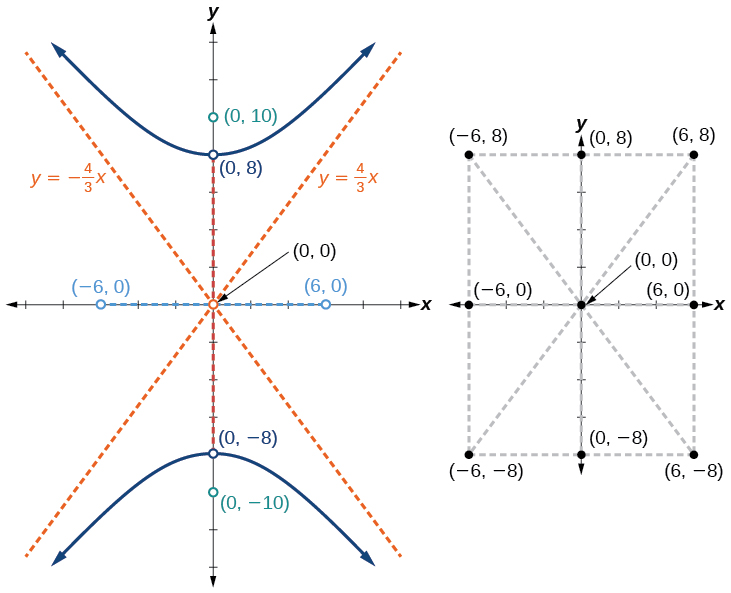| << Chapter < Page | Chapter >> Page > |
What is the standard form equation of the hyperbola that has vertices at and and foci at and
The y -coordinates of the vertices and foci are the same, so the transverse axis is parallel to the x -axis. Thus, the equation of the hyperbola will have the form
First, we identify the center, The center is halfway between the vertices and Applying the midpoint formula, we have
Next, we find The length of the transverse axis, is bounded by the vertices. So, we can find by finding the distance between the x -coordinates of the vertices.
Now we need to find The coordinates of the foci are So and We can use the x -coordinate from either of these points to solve for Using the point and substituting
Next, solve for using the equation
Finally, substitute the values found for and into the standard form of the equation.
What is the standard form equation of the hyperbola that has vertices and and foci and
When we have an equation in standard form for a hyperbola centered at the origin, we can interpret its parts to identify the key features of its graph: the center, vertices, co-vertices, asymptotes, foci, and lengths and positions of the transverse and conjugate axes. To graph hyperbolas centered at the origin, we use the standard form for horizontal hyperbolas and the standard form for vertical hyperbolas.
Given a standard form equation for a hyperbola centered at sketch the graph.
Graph the hyperbola given by the equation Identify and label the vertices, co-vertices, foci, and asymptotes.
The standard form that applies to the given equation is Thus, the transverse axis is on the y -axis
The coordinates of the vertices are
The coordinates of the co-vertices are
The coordinates of the foci are where Solving for we have
Therefore, the coordinates of the foci are
The equations of the asymptotes are
Plot and label the vertices and co-vertices, and then sketch the central rectangle. Sides of the rectangle are parallel to the axes and pass through the vertices and co-vertices. Sketch and extend the diagonals of the central rectangle to show the asymptotes. The central rectangle and asymptotes provide the framework needed to sketch an accurate graph of the hyperbola. Label the foci and asymptotes, and draw a smooth curve to form the hyperbola, as shown in [link] .


Notification Switch
Would you like to follow the 'College algebra' conversation and receive update notifications?